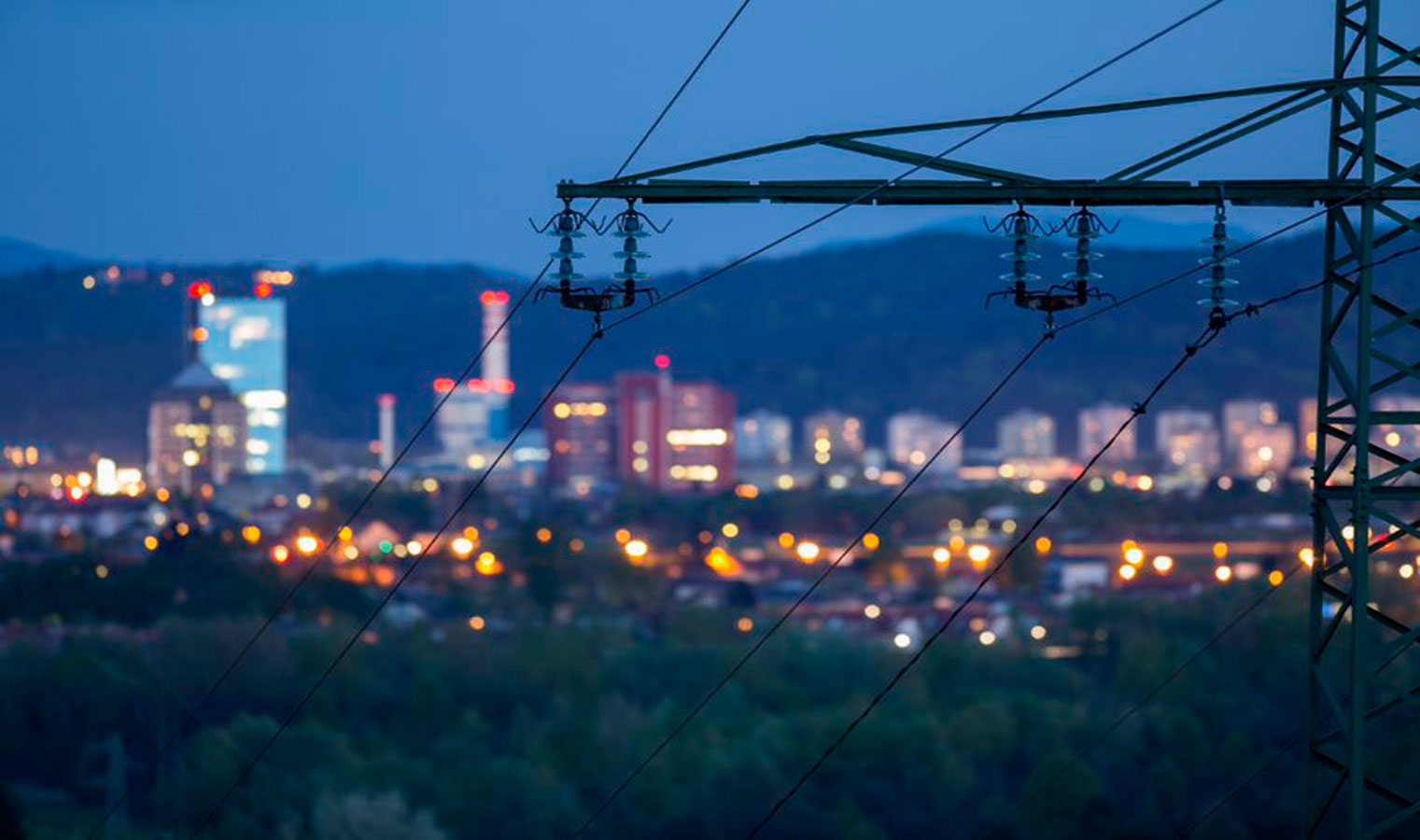For 40 years, we've been driving our country's economic and social progress. Four decades shaping Spain.
Demand for electricity in Spain fell 1.7% in December
- 46.2% of monthly generation came from renewable sources and 62.6% was obtained using technologies which produce zero CO2 equivalent emissions.
- Electricity demand fell by 0.1% in the Balearic Islands and increased by 10% in the Canary Islands compared to December 2020.
National electricity demand in December is estimated at 22,049 GWh, a value that is 1.7% lower than the figure registered in the same month last year. After having factored in the influence of seasonal and working patterns, the figure is 1.3% lower than in December last year.

Compared to a pre-pandemic period (December 2019) and after having factored in the influence of seasonal and working patterns, national electricity demand has fallen 1.1%.
For the year as a whole, demand is estimated at 256,462 GWh, a figure that is 2.6% more than in 2020 and 3.1% less than in 2019. Once again, after having factored in the influence of seasonal and working patterns, annual demand is 2.5% higher than in 2020.
During the month of December, and according to data estimated at the time of this press release, generation coming from renewable energy sources represented 46.2% of the generation mix nationwide. During the month, the production of green energy stood at 11,053GWh, which is 7.5% lower than in December 2020. If we look at the total for the 12 months of the year, generation from renewable sources reached 46.6%, compared to 44% in 2020 and 37.5% in 2019.
With the information available at the time of this press release, wind power generation was the leading technology in Spain in December. Specifically, its production represented 28.8% of the total generation mix (6,884 GWh). Combined cycle was the second largest source of power generation in the month (21.9%), with 5,240 GWh.
Nuclear, with a contribution of 16.4%, is the third leading technology in electricity generation in December, followed by hydro which, with 2,503 GWh generated in December, is ranked fourth in the generation mix with a share of 10.5%.
For its part, solar photovoltaic generated 1,018 GWh, 37% more than in December 2020, representing a share in the national generation mix that stood at 4.3%.
In the final month of 2021, 62.6% of electricity production was obtained using technologies which produce zero CO2 equivalent emissions.

Demand for electrical energy in the peninsular electricity system fell 2.1%
Demand for electrical energy in the mainland electricity system in December is estimated at 20,846 GWh, down 2.1% compared to December 2020. After having factored in the influence of seasonal and working patterns, the demand for electricity is 1.6% lower than that registered in the same month last year.
Compared to a pre-pandemic period (December 2019) and after having factored in the influence of seasonal and working patterns, electricity demand on the peninsula has fallen 1.1%.
From January to December 2021, electricity demand on the Spanish mainland is estimated at 242,455 GWh, a value that is 2.4% higher than in the same period in 2020. In this case, after having factored in the influence of seasonal and working patterns, demand is 2.4% higher than last year.
During December, and according to data estimated at the time of this press release, 48% of generation on the Spanish mainland came from renewable energy sources and 65.2% was obtained using technologies which produce zero CO2 equivalent emissions. For its part, wind energy stood at 6,789 GWh and was the leading source of generation, and solar photovoltaic stood at 989 GWh, up 37.3% on the same month in 2020.
Demand for electricity in December falls 0.1% in the Balearic Islands and increases 10% in the Canary Islands
In the Balearic Islands, the demand for electricity in December is estimated at 436,735 MWh, a value that is 0.1% lower than that recorded in the same month last year. After factoring in the influence of seasonal and working patterns, the figure is 1.4% down on that recorded in December 2020.
Compared to a pre-pandemic period (December 2019) and after having factored in the influence of seasonal and working patterns, electricity demand on the Balearic Islands has grown 2.6%.
For the year as a whole, electricity demand in the Balearic Islands is estimated at 5,527,335 MWh, a figure that is 11.9% higher than in 2020.
Combined cycle, with 83.3% of the total production in the Balearic Islands, was the leading source of electricity generation in the archipelago in December, followed by off-grid diesel generators (6%). This month, renewable energy and those technologies which produce zero CO2 equivalent emissions accounted for 5.2% of the total.
Furthermore, during the month, energy transferred via the Spanish Peninsula-Majorca submarine link contributed to covering 7.2% of the electricity demand in the Balearic Islands.
Regarding the Canary Islands, electricity demand is estimated at 731,981 MWh, up 10% on that recorded in December 2020. After factoring in the influence of seasonal and working patterns, the figure is 9.9% higher than that registered in the same month last year.
Compared to a pre-pandemic period (December 2019) and after having factored in the influence of seasonal and working patterns, the demand for electricity in the Canary Islands has fallen 2.2%.
In 2021, electricity demand in the Canary Islands is estimated at 8,075,627 MWh, a figure that is 1.6% more than in 2020.
Combined cycle, with a share of 45.8% of the total mix, was the leading source of electricity generation in December, while renewables and those technologies which produce zero CO2 emissions represented 15.5% of the total generation.
Consult our Daily Balance Report for more information on the National, Peninsular, Balearic Islands and Canary Islands electricity systems as at the close of December.










